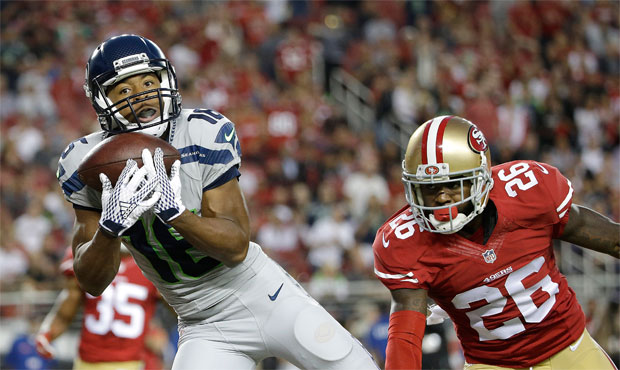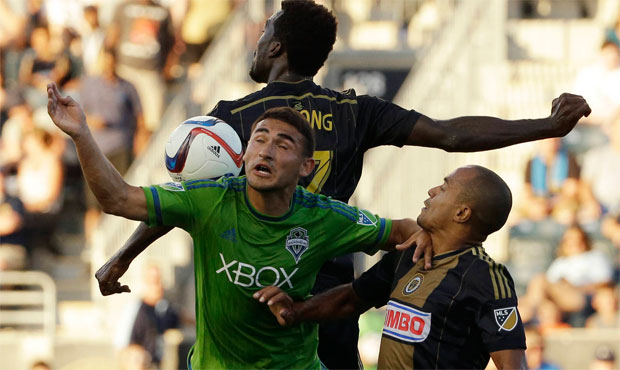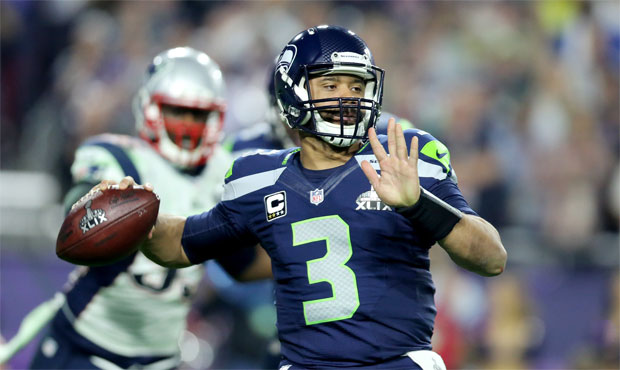Mariners Blog
Mariners’ focus is on whole organization, not just big leagues
 Mariners director of player personnel Andy McKay: "We aren't talking about being a team, we are living it." (AP)
Mariners director of player personnel Andy McKay: "We aren't talking about being a team, we are living it." (AP)
“We want to play our organization against their team.”
Words from Andy McKay that quickly jumped out from the podium at the Mariners pre-spring training luncheon to the reporters notebook page, surrounded by quote marks, underlined three times, with stars in the margin. While we have seen Jerry Dipoto spend the last three months reworking the big league team, one of the most intriguing questions has been “What about the farm system?”
Related: Position battles, injury updates heading into Mariners spring training
How do you turn that into an effective conduit of young players to the big leagues and good currency for trade? We knew there were philosophies, but what were they? What would this look like? New director of player personnel McKay gave a picture of the endgame, of what we should see every night when the Mariners take the field. One team on one side, an organization on the other.
“If you can harness the cumulative power of your organization – your scouting group, your training staff and strength and conditioning people, your pitching coaches – if you can harness it all together into a cohesive unit, now you truly have an organization,” he explained. “Now when a player throws a pitch at Safeco Field or a hitter takes an at-bat at Safeco Field, then you are really representing the entire organization. The entire organization has improved that player to the best of their abilities. If you can do that you have the chance to tilt the field in your favor.”
Cohesiveness and communication throughout the entire organization was a theme that kept coming up as speaker after speaker took the podium.Thursday afternoon. Things will be done differently. There will be more of connection to what happens at Safeco Field with the rest of the organization than just the ‘M’ or the logo somewhere on the minor league uniforms. A number of prospects already have experienced this commitment, having taken part in the hitting summit which was held in Peoria a couple of weeks ago.
“We had the Major League manager, the Major League hitting coach in the cage with (Single-A) Clinton and Everett guys. We aren’t talking about being a team, we are living it,” McKay said.
This was the group that got the first look at how the organization’s offensive philosophy would be taught. There was a lot of time spent in meeting rooms and whiteboard chalk talks. Terminology was introduced with the expectation being that these were the words the players would hear at every stop in the minors and, if they made it there eventually, Seattle.
“There’s no separation,” McKay emphasized. “They’re our players, it’s our system. The terms I’m using, the standards I am setting are the same ones Scott (Servais) will use. This is what we do. This is what defines being a Mariner.”
Dipoto is not making this up as he goes. Those he has worked with in the past say they’ve seen a lot of this before. He has his vision and volumes of notes on how to accomplish it. Building a big league team and building a farm system are two completely different things, and on the day he was introduced in Seattle, Dipoto pointed out that the building of the farm system is the long game. It takes longer but the process is well underway. The language is being learned and the consistency of message should help the players.
“Where we failed as an organization was our consistent communication to our players,” assistant general manager Jeff Kingston said candidly. “When our players were getting different messages from different places it really made it difficult on them. I took it as we had to do better as an organization. I’m extremely excited and confident that we are already there for what our message will be from an offensive standpoint, defensive standpoint, as an organization.”
Young players want to get better and struggles are scary. Those around them want to help, their intentions are good, but too much information can ultimately be harmful. Last year I asked a young hitter about his approach. “Whose do you want?” he asked before giving me the third plan I had heard for him that year. He was told one thing in spring training, another thing in the minors and then another in Seattle. It had to be frustrating and it certainly wasn’t helping the player who continued to struggle.
There are now systems in place to ensure this doesn’t happen. Multiple people will work with the players, but there will be a plan. The baseball language they are speaking will be understandable and will be heard throughout the organization. The goal, or rather the expectation, will be cohesiveness throughout the organization. Everyone on the same page, an entire organization on the same team.

























Comments